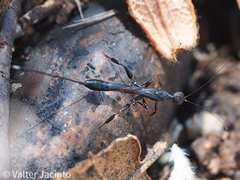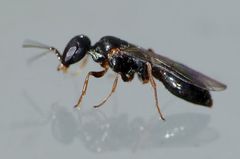Red palm weevil
Rhynchophorus ferrugineus
Insecta Rhynchophorus ferrugineus, commonly known as the Red Palm Weevil or "picudo rojo" in Spanish, is a beetle that poses a significant threat to palm trees. Originally from Southeast Asia, this invasive species has spread to the Comunidad Valenciana and other parts of the Mediterranean, causing extensive damage to palm trees, particularly the Canary Island Date Palm (Phoenix canariensis).
The Red Palm Weevil is characterized by its reddish-brown color and size, with adults measuring around 2 to 5 centimeters in length. It has a distinctive elongated snout, which is a hallmark of its species. The insect's lifecycle includes egg, larval, pupal, and adult stages, with the larval stage being the most destructive. During this stage, the larvae burrow into the trunk and crown of the palm, creating tunnels and feeding on the plant tissue.
Infestations by Rhynchophorus ferrugineus are challenging to detect early, as symptoms often only become apparent after significant damage has occurred. Signs of infestation include wilting and yellowing of palm fronds, holes in the trunk, and oozing of brown viscous liquid.
Efforts to control and manage the spread of the Red Palm Weevil in the Comunidad Valenciana include:
- Regular monitoring of palm trees for early detection of infestation.
- Applying chemical treatments and biological controls to affected areas.
- Removing and destroying severely infested trees to prevent the spread to nearby healthy palms.
- Raising public awareness about the identification and risks associated with the Red Palm Weevil.
Effective control and management strategies are crucial for the preservation of palm species within the region, both for environmental diversity and the aesthetic value that these iconic trees provide to the landscape of the Comunidad Valenciana.







